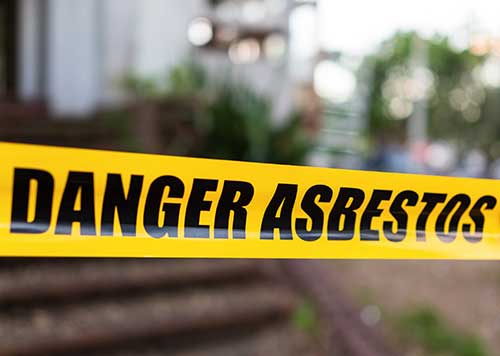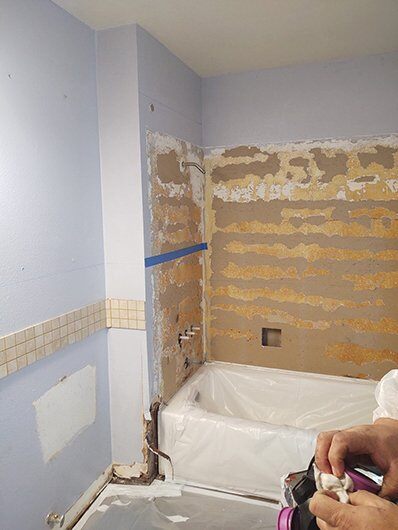The History of Asbestos: Regulations and Impact in the U.S. and Oregon
Asbestos, a once widely used mineral known for its heat resistance and durability, has a complex history in the United States, with lasting implications for public health and safety. Despite efforts to regulate its use, asbestos remains a concern even today. Let's delve into the timeline of asbestos regulations in the U.S. and explore its specific impact on Oregon.
Asbestos Regulation Timeline in the U.S.
- 1970: The Clean Air Act
The Clean Air Act of 1970 marked a significant step in asbestos regulation by classifying it as a hazardous air pollutant. This legislation empowered the Environmental Protection Agency (EPA) to monitor and control the usage and disposal of asbestos. Notably, the act led to the ban on spray-applied asbestos products.
- 1976: The Toxic Substances Control Act (TSCA)
Under the Toxic Substances Control Act of 1976, the EPA gained authority to impose restrictions on several chemicals, including asbestos. This act laid the foundation for regulating the use of asbestos, alongside substances like radon and lead-based paint.
- 1986: The Asbestos Hazard Emergency Response Act (AHERA)
The Asbestos Hazard Emergency Response Act of 1986 mandated the EPA to establish inspection and removal standards for asbestos in schools. This was a crucial measure to protect students and staff from the dangers of asbestos exposure.
- 1989: The Asbestos Ban and Phase-Out Rule (ABPR)
In July 1989, the EPA issued the Asbestos Ban and Phase-Out Rule, aiming to completely ban the manufacturing, importation, processing, and sale of asbestos-containing products. However, this ban faced legal challenges and was overturned by the Fifth Circuit Court of Appeals in 1991.
- 1991: Legal Challenges and Clarifications
Following the court's decision, the EPA received clarifications regarding the ban's scope. Certain categories of asbestos-containing products were identified and prohibited, such as flooring felt, rollboard, and specialty papers. These bans on specific asbestos products persist to this day.
- 2019: Strengthening Regulations
In April 2019, the EPA implemented a final rule to enhance the review process for discontinued asbestos products before they could re-enter the market. This rule aimed to prevent the reintroduction of asbestos products that pose risks to public health.
- 2024: Continued Improvements
In early 2024, the EPA introduced updated regulations concerning asbestos materials in the automotive industry. These new regulations are designed to further restrict the use of asbestos-containing materials in automotive products to enhance worker and consumer safety. By imposing stringent guidelines on the manufacturing, importation, and processing of asbestos in automotive components, the EPA aims to reduce the potential health risks associated with asbestos exposure in the automotive sector. These updated regulations underscore the ongoing efforts to phase out asbestos usage in various industries, emphasizing the importance of prioritizing health and environmental sustainability in automotive manufacturing practices.
Asbestos Regulations in Oregon
Oregon, like many states, has implemented measures to address asbestos-related concerns within its borders. Specific dates and regulations relevant to Oregon include:
-
DEQ requires an accredited inspector conduct an asbestos survey prior to demolition and renovation
activities on:
-
Residential renovation and demolition projects on buildings constructed before Jan. 1, 2004.
-
All commercial renovation and demolition projects regardless of construction date.
-
-
In fall 2018, Oregon adopted additional asbestos regulations:
-
Residential renovation asbestos survey - All residential buildings constructed prior to Jan. 1, 2004 must now have an asbestos survey conducted by an accredited asbestos inspector prior to demolition and renovation activities.
-
Updated disposal requirements for nonfriable waste materials - Nonfriable asbestos waste must now be packaged the same as friable waste.
-
Accredited laboratories for asbestos testing - By Jan. 1, 2021, asbestos survey bulk samples must be analyzed by a laboratory that participates in a nationally recognized accreditation or testing program.
-
Asbestos survey reports - Asbestos survey reports must now meet standard requirements.
-
By aligning with federal guidelines and establishing state-specific regulations, Oregon aims to safeguard its residents from the adverse effects of asbestos exposure and ensure proper handling and disposal of asbestos-containing materials within the state.
The history of asbestos regulation in the U.S. reflects a continuous effort to mitigate the risks associated with this hazardous material. Through a combination of federal and state-level regulations, including those implemented in Oregon, steps are being taken to protect public health and promote safer environments for all.



